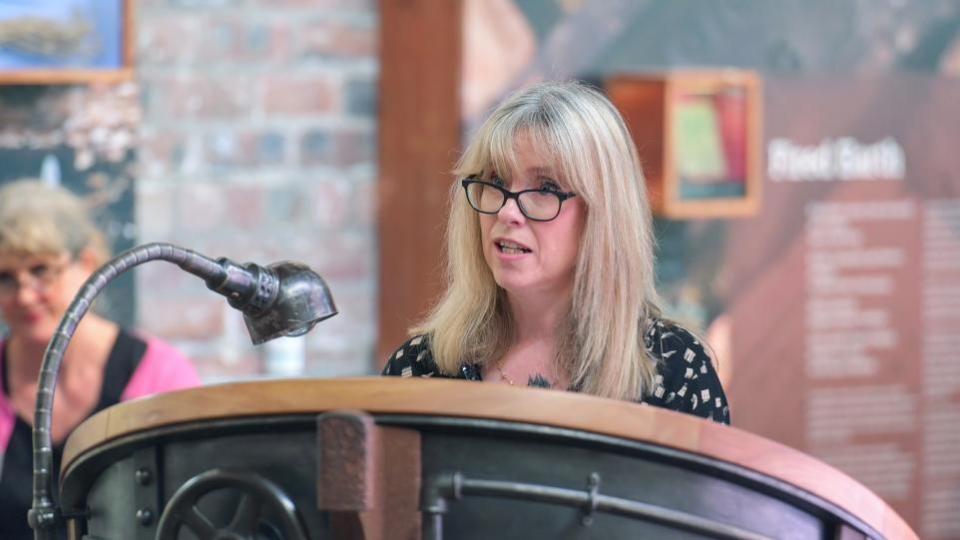Jobs
Modern Apprenticeship work opportunities build up confidence

New figures released by Skills Development Scotland reveal more than 38,000 Scots are benefiting from Modern Apprenticeship jobs with their feedback being overwhelmingly positive
MORE young Scots are choosing apprenticeships and achieving higher level skills to support them, employers and the economy.
Thanks to Scotland’s employers and learning providers, almost 25,500 young people are getting the chance to work, learn and earn through Modern Apprenticeships.
The latest annual Modern Apprenticeship (MA) statistics, released by Skills Development Scotland (SDS) show that 59.7 per cent (15,131) of 25,365 MA starts were aged 16 to 24 years old, the majority of which were 16 to 19-year-olds (10,130).
The three per cent year-on-year increase on 16 to 19-year-olds taking an apprenticeship indicates that young people have a more positive view of apprenticeships as a career choice on leaving education.
Nearly half (47.8 per cent) of those taking an apprenticeship in Science, Technology, Engineering and Maths (STEM) related frameworks were in this youngest age group. This supported the overall year on year increase in uptake of MAs at higher levels, with eight in ten people (82.9 per cent) learning skills at SCQF Level 6 or above.
The MA achievement rate also increased across all age groups year on year at 76 per cent, with more completing an apprenticeship at higher SCQF levels (76.3 per cent at SCQF Level 6 and above).
The latest figures also help to reinforce that apprenticeships are accessible for people from diverse backgrounds, with MA uptake at the highest ever levels from those who identified as being care experienced (2.3 per cent), disabled (17 per cent) and from an ethnic minority (4.5 per cent). Achievement rates for these groups also increased year on year.
In addition, 23.5 per cent of MA starts resided in the 20 per cent most deprived areas, compared to 13.8 per cent from the 20 per cent least deprived areas.
Chair of SDS, Frank Mitchell, pictured below, said: “Modern Apprenticeships provide young people with a fantastic opportunity to kick-start their career and earn while they learn, set against a backdrop of cost-of-living pressure and a focus on creating a workforce fit for the future.

“Through apprenticeships, Scotland is producing a generation of talented and skilled people that can support the needs of employers and the economy.
“More than 38,000 people of all ages, abilities and backgrounds are accessing high-quality jobs and transforming their lives through Modern Apprenticeships.
“It is very clear that apprenticeships play a vital role in meeting economic, environmental and health and wellbeing challenges and opportunities, helping Scotland to become a fairer, more equal society.”
Further Education Minister Graeme Dey said: “Modern Apprenticeships play a vital role in giving young people a pathway into a rewarding career that provides them with the tools to support our future economy. It is encouraging to see more young people understand the benefits of apprenticeships and the valuable work-based learning they provide.
“These figures also show that more Modern Apprentices are succeeding, allowing them to continue progressing in their chosen career path.
“The Scottish Government is committed to ensuring that apprenticeships remain of high quality and lead to sustainable employment opportunities characterised by Fair Work.”
Apprentices from across the country have also been sharing positive views with SDS about their skills development through apprenticeships.
As part of its wider programme of research and evaluation to inform continuous improvement, SDS gathers insight from individuals when they are in training and post-apprenticeship, through Apprentice Voice.
Thousands of Modern Apprentices share their opinions on issues such as awareness, satisfaction, perceptions, benefits, destinations and outcomes.
Individuals are given the opportunity to anonymously provide feedback through short online surveys at three stages across their time in training and post apprenticeship.
The work ensures that the voice of the apprentice is included when shaping the delivery and development of Scottish Apprenticeships. Of those in training who stated learning new skills was important when choosing a Modern Apprenticeship, nearly all – 99 per cent – said they had improved at least one skill area.
Nine in ten apprentices that stated building confidence was important when choosing an apprenticeship said they had become more confident.
The latest feedback from apprentices about their overall experience was overwhelmingly positive, with 94 per cent satisfied or highly satisfied with their apprenticeship.
Of those that responded, 94 per cent said they were likely to recommend an apprenticeship to others whilst the same percentage rated the quality of their training.
Find out more about apprenticeships at apprenticeships.scot
——————————————————-
New strategy to grow workforce in heritage sector
A FIVE-YEAR plan has been launched to help tackle Scotland’s heritage skills gaps.
The Skills Investment Plan (SIP) identifies priority actions to build a healthy and sustainable skills system supporting employers and individuals working across the sector.
The plan will focus on three priority themes: growing provision and building capacity; attracting future talent and improving access to the workforce; and fostering innovation.
Skills Development Scotland (SDS) is one of 15 partners that worked with
lead agency Historic Environment Scotland to co-ordinate extensive research that identified areas for action and built on the original SIP published in 2019.
That plan saw progress including the creation of employability programmes in traditional building skills, developing a new training programme in energy efficiency and reaching nearly 15,000 young people through campaigns like Creative Careers Week, Build Your Future and Defend the Castle to attract new talent.
The sector continues to face challenges in attracting and retaining talent post-Brexit, as well as the additional work required to bring operations back to pre-pandemic levels.
The plan was launched at the Engine Shed, Scotland’s national conservation centre, with over 100 representatives involved in skills planning and delivery, leading heritage organisations and funders attending.
Culture Minister Kaukab Stewart said: “The launch of the refreshed Skills Investment Plan for the Historic Environment represents a significant step forward in our collective efforts to safeguard and celebrate our historic environment. But it is only the beginning and I call upon those involved to actively engage in the delivery of the Skills Investment Plan over the next five years and face the challenges head-on together, with confidence and innovation.
Alison Turnbull, Director of External Relations and Partnerships at HES, said: “The partnership and collaboration involved in developing this strategy demonstrates how we will work together as a sector and with our partners to build a skills system that works for the sector, that supports us to address challenges and seize opportunities collectively.
“A sustainable and successful heritage sector is also vital in meeting Scotland’s net zero target. This plan helps pave the way for us to attract and retain the skills and talent we need for a fairer, greener future.
“The plan recognises that a skilled workforce is crucial for the sector to continue to deliver for Scotland’s economy and to manage, protect and conserve our historic environment for generations to come.”
The SIP supports the delivery of Our Past, Our Future, Scotland’s strategy for the historic environment, with organisations across Scotland working together to sustain and enhance the benefits of Scotland’s historic environment.
The plan responds to one of its key principles to help nurture and grow an inclusive, diverse and skilled workforce.
Elaine Ellis, Skills Planning Manager at SDS, said: “The Historic Environment is a big part of what makes Scotland unique and is a major draw for domestic and overseas visitors, with millions of people visiting our Historic attractions each year. Ensuring the sector attracts, trains and upskills its workforce to meet the challenges of the future is vital.


“The refreshed SIP allows us to recognise new challenges and plan actions that will support the sector to have the workforce it needs.”
Read the new plan at historicenvironment.scot







